Posted on Mastodon,
Working on a 10 GHz power amp…
https://social.kernel.org/notice/Adeu5KFtWc1imfg2oS
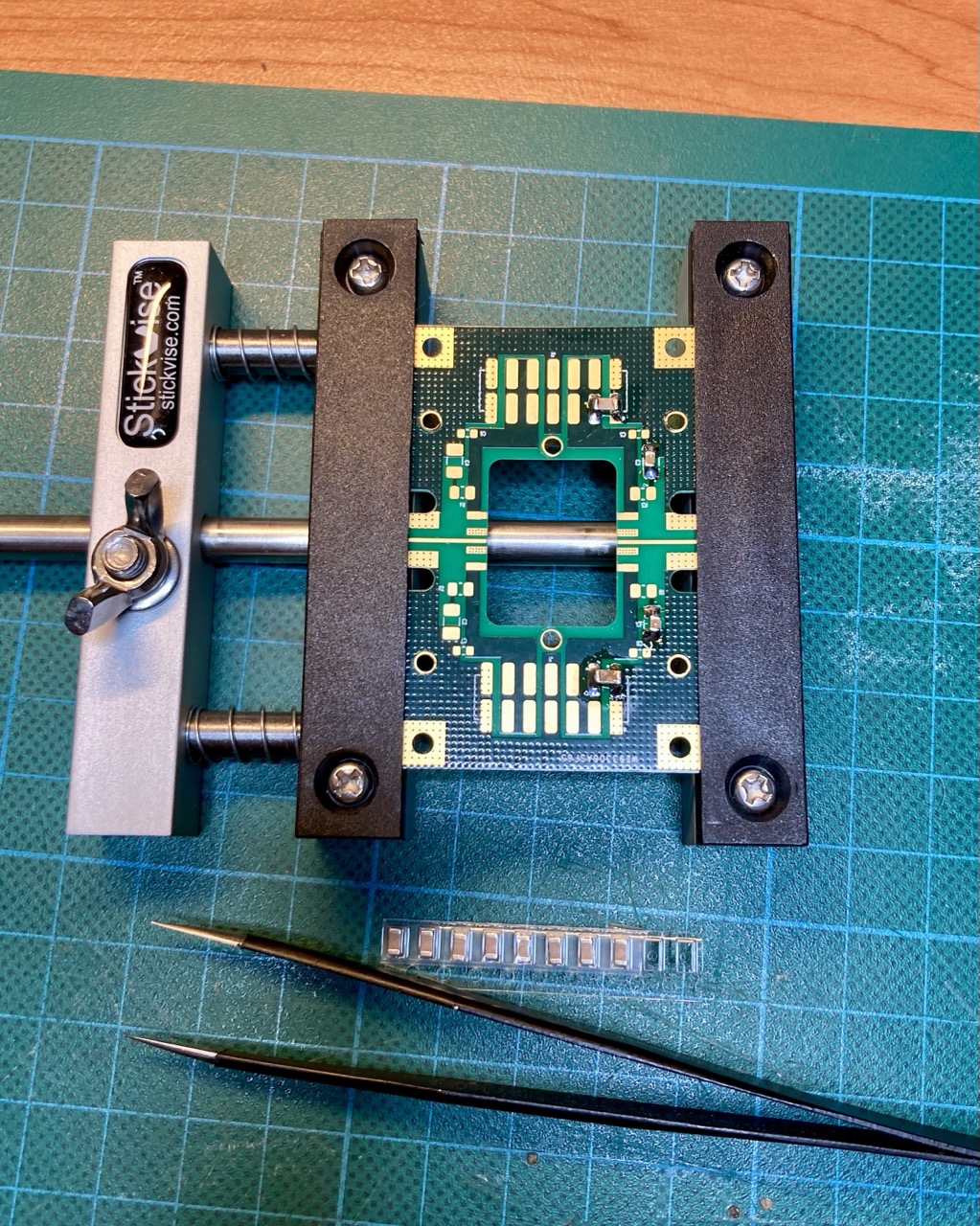
Amateur Radio, Microwave, Radio Astronomy, & Electronics
Posted on Mastodon,
Working on a 10 GHz power amp…
https://social.kernel.org/notice/Adeu5KFtWc1imfg2oS

Posted on Mastodon: https://social.kernel.org/notice/Ac3eWRlirgKRzORTeK
“Testing a Ka band LNB, specified for 20.2-21.2 GHz. I could not see any signals beyond 22.8 GHz (well short of the 24 GHz amateur band), but that could be due to issues at the IF level. Worth investigating further. I was able to see a good signals at 22.2, an important radio astronomy frequency …”
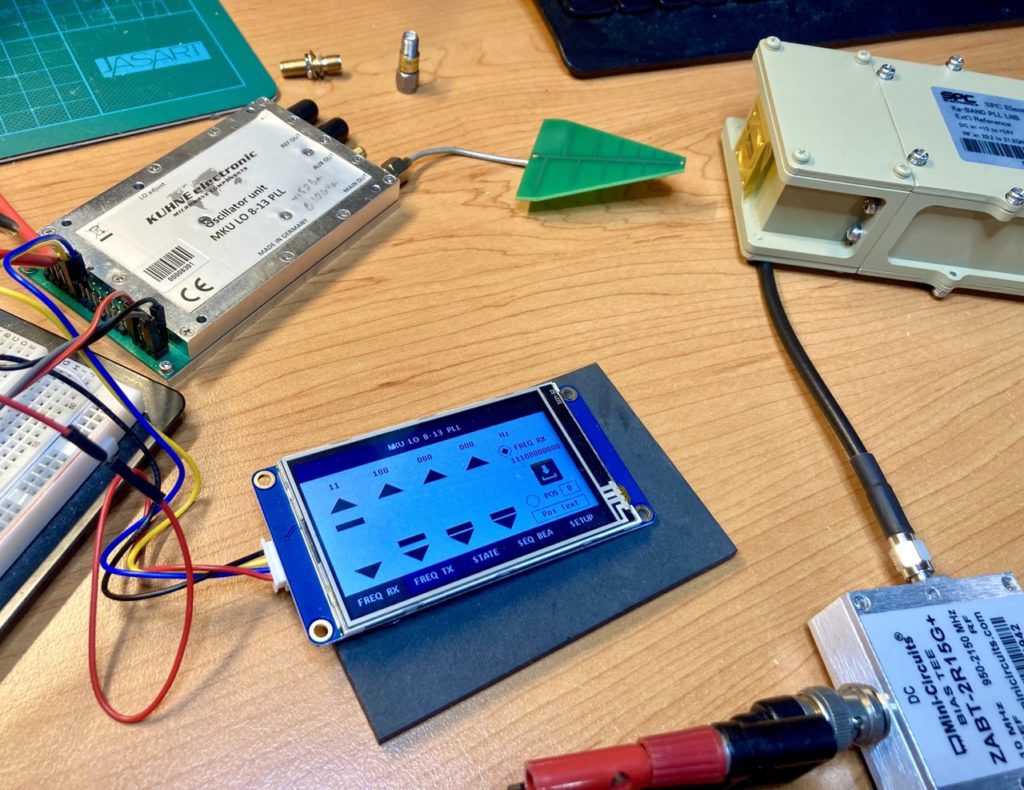
Recently, in addition to 3cm projects and HF digital, I’ve been monitoring WSPR in the 8m (40 MHz) band. This an ISM band with some experimental licenses issued in the US, Canada, and other countries, as well as a few secondary amateur allocations in Europe and in South Africa. There are proposals to make this a secondary allocation in the US, at least.
This is a very low VHF band, and shares propagation characteristics with both 10m and 6m. It’s a potential indicator of Sporadic E openings on 6m, and with the good sunspot conditions lately, there’s been an uptick in folks transmitting and receiving.
You can find out more about 8m at EI7GL’s blog, which is a fantastic resource for this and many other amateur radio topics.
I started listening a couple of weeks ago with a simple wire dipole strung up in the back yard. I’ve now built an aluminum dipole which can self-support and be more readily tuned, and put up above the roof line with a shorter and better feedline. This has shown marked improvement, and I’ll keep experimenting to see what works best. It may turn out to be better further from the house, even if closer to the ground.

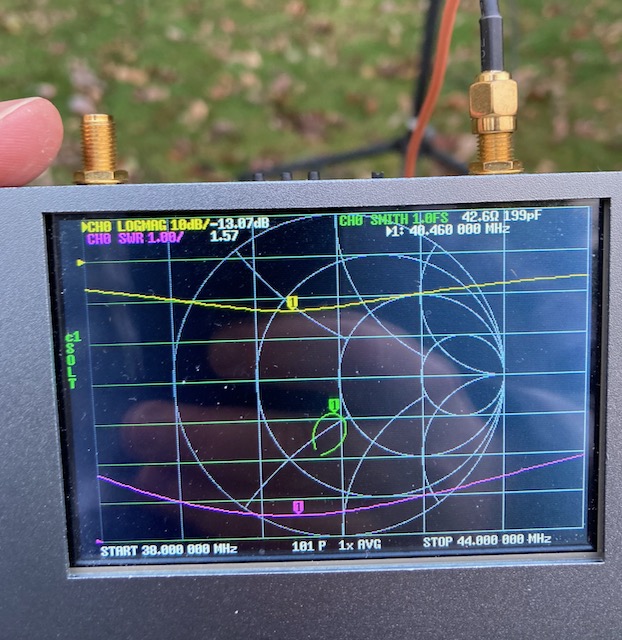
There was some great great propagation happening today between Australia/NZ and USA/Canada, on 40.68 MHz.

In the above, there’s a 15642 km report for VA2CY from VK4OTZ:
2023-03-03 22:44 VA2CY 40.681527 -11 0 FN46lw 50 VK4OTZ QG62jo 15642 284 W-2
This is just short of the current record for 8m for any mode, but I think is actually the record for WSPR on 8m.
Note:
I had been posting radio/electronics updates to Twitter instead of this blog for some years, but I’m not as active there since the ownership change and I’ll try and update this more instead.
I’m also now on the Fediverse (“Mastodon”) here: https://social.kernel.org/jmorris . There is not currently seem to a critical mass of radio & electronics experimentation folk on there, but it is growing. If you’re reading this and on there, consider adding me. The real value of this kind of social media is the network graph, so I’m adding anyone with similar interests currently to help build that.
W7TXT
I had some fun on the weekend participating in the 2019 Spring Microwave Sprint. A bunch of PNW folk were out for this event, many of whom have been working on microwave system builds at a monthly meetup held by Frank AG6QV.
I met up with Frank at Three Tree Point, and set up my 10GHz rig next to his. Our goal was to bounce signals off Mt Rainier, which is visible across Puget Sound from there.
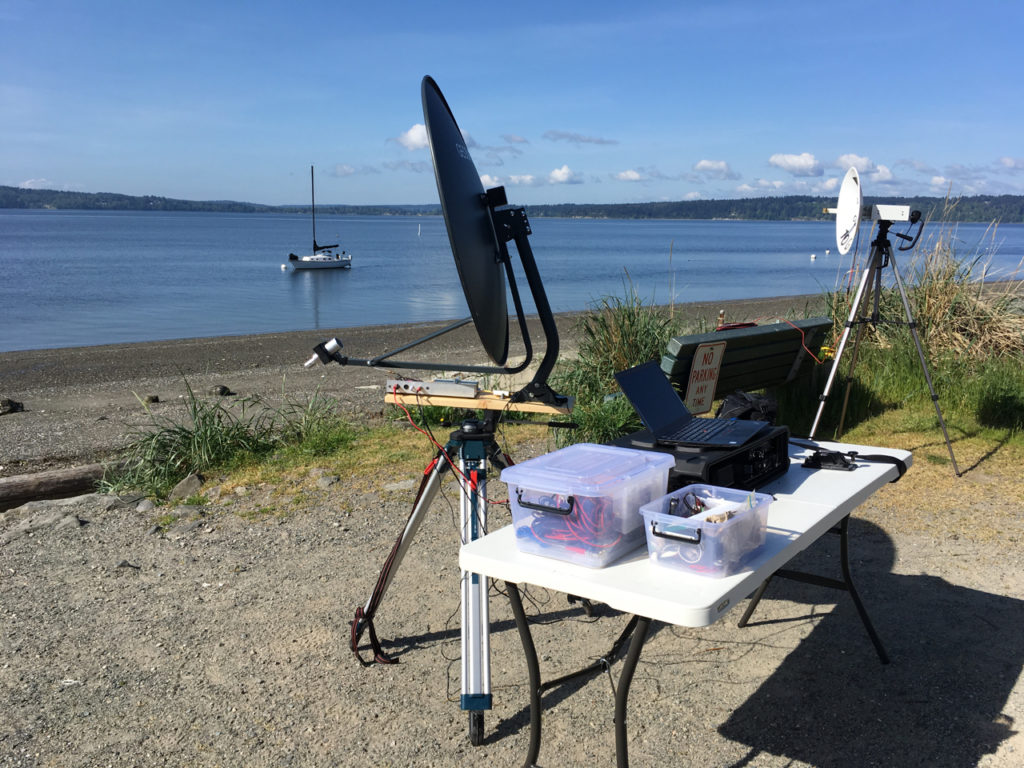
Once the other stations in the region were up and running on 10GHz, we were both able to make easy SSB voice contacts with Ray W7GLF, who was located in the Kirkland WA area, and also pointing at Mt Rainier.

We also heard Dale KD7UO on CW (located closer to the mountain) but were unable to establish a contact.
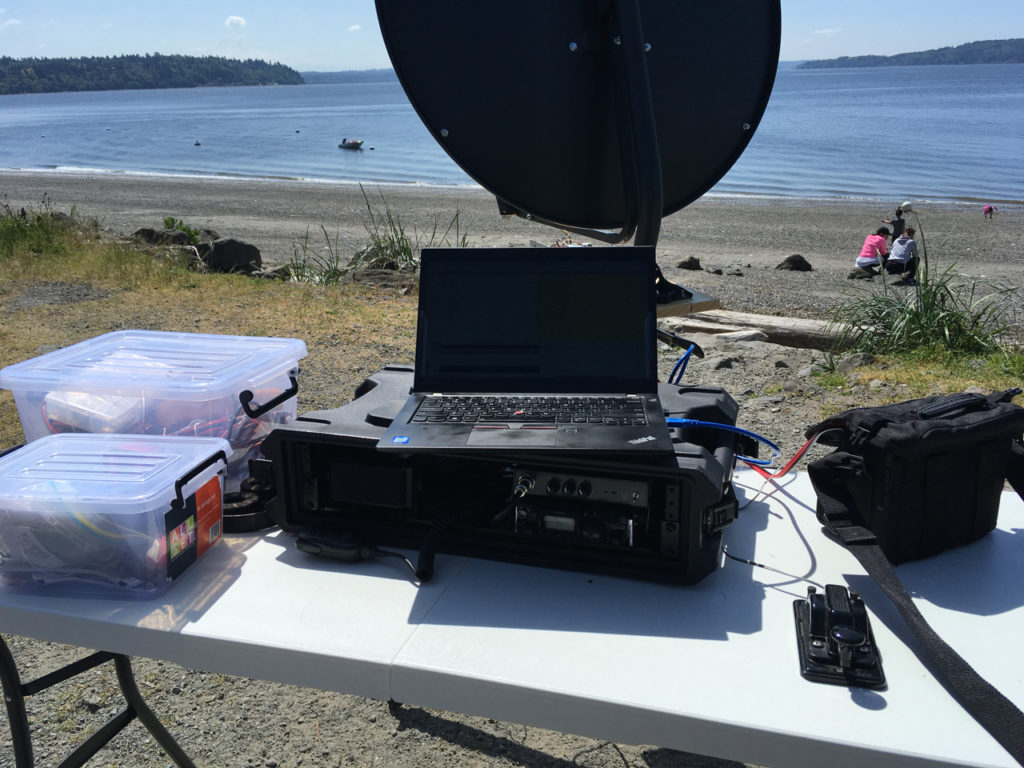
This was the first time I’d actually gotten out and used my 10GHz rig in the field and it was satisfying to see it all come together as a system.
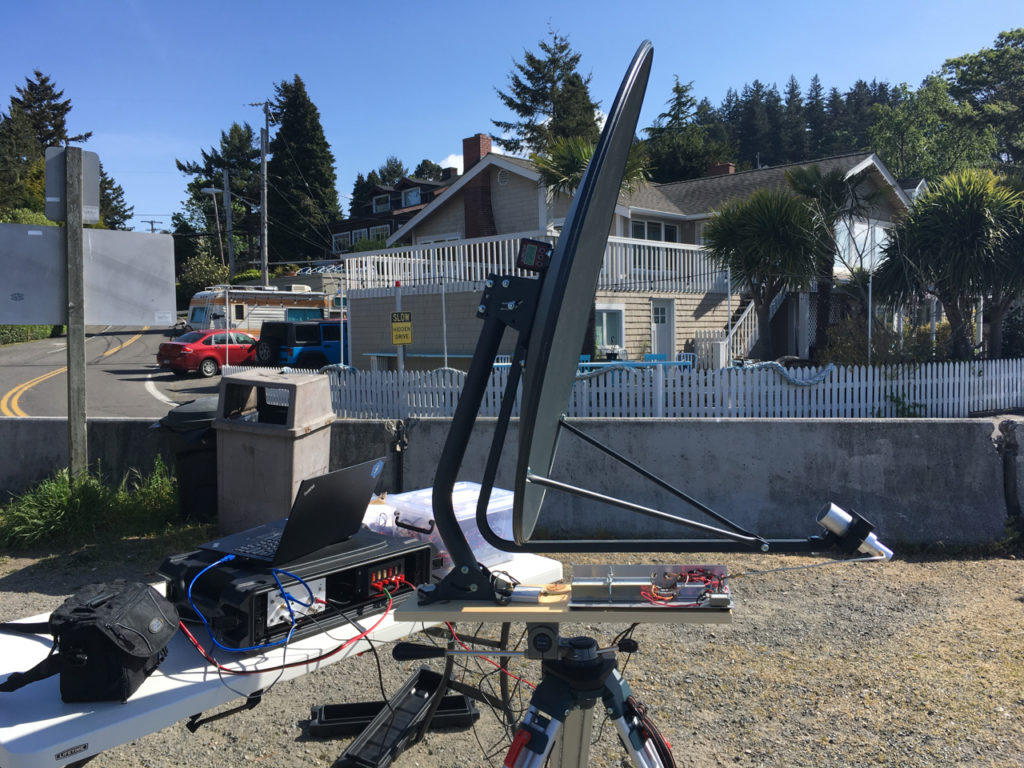
I was fortunate to travel to Dayton OH last weekend to attend Microwave Update 2018. I’ve been tinkering with microwave gear for a few years now, and this was my first time attending a microwave conference. It was inspiring to meet so many of the leading amateurs in this field, whose articles and projects provide so much critical information and know-how.
Highlights for me included:
I’m now very keen to explore the world above 10 GHz. Stay tuned… 🙂
A PDF of the proceedings can be downloaded here, and photos of the event have been published on facebook.
I finally got around to hooking my 10 GHz transverter up to a dish.
This is a 90cm TV satellite dish, which was relatively inexpensive and easy to ship. I was looking for a 1.2m dish, but they are difficult to ship, and not worth it for me at this stage.
I’m using a survey tripod with a large Gitzo 3-way head (which I picked up a few months ago in Tokyo for cheap). The dish is mounted via a cut-down roof mount pole, to a piece of wood, as quick and dirty way to get the system together for evaluation. It’s not sturdy or accurate enough for serious use.
The transverter is locked to GPS via a Leo Bodnar mini-GPS frequency reference, powered here by a phone power bank via a USB cable. At some point I’ll add a 5V bus to the transverter.
I’m running 200 mW barefoot out of the transverter, with a dish gain of about 40 dBi, producing an EIRP in the order of 1KW.
The next step with this is to set up my beacon at home, then drive around seeing where and how far away I can pick it up with this dish setup. Or maybe even talk to someone.
This is where I write about amateur radio and electronics.
I recently relocated to the Seattle area from Sydney, Australia, where I was active as VK2TXP. I’m now also W7TXT.
My amateur radio interests are mostly in VHF and above. Current projects include a 10GHz beacon (see the status page), and a 10GHz transverter.
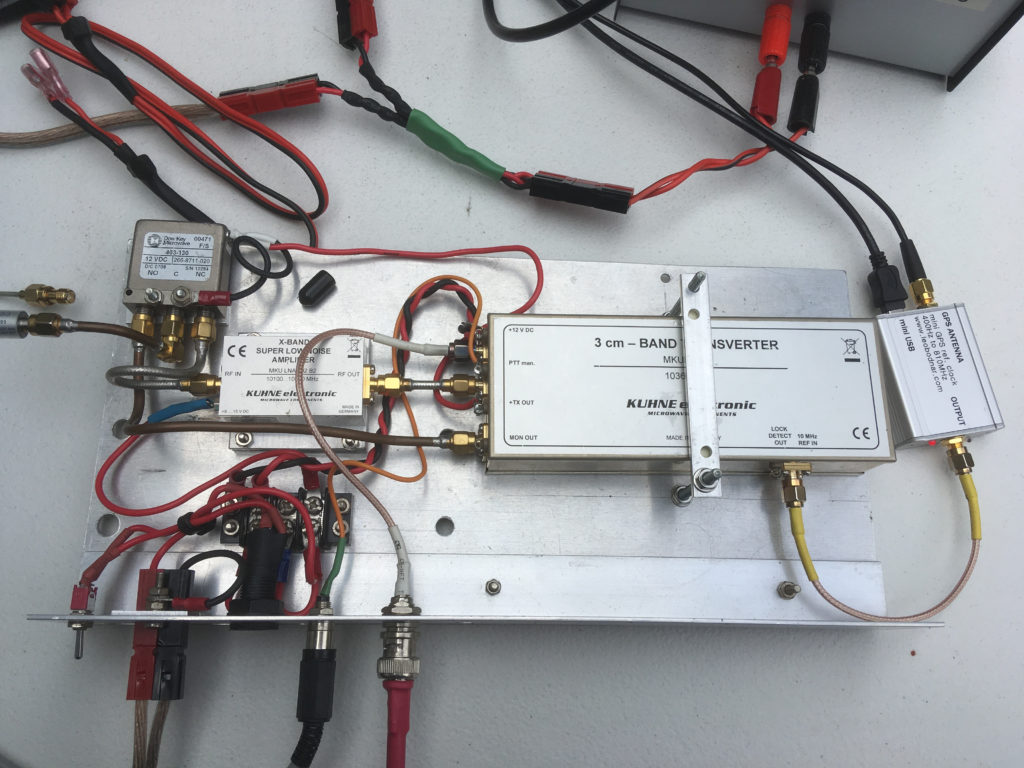
I also maintain a work-related Linux kernel security development blog, and a twitter account.